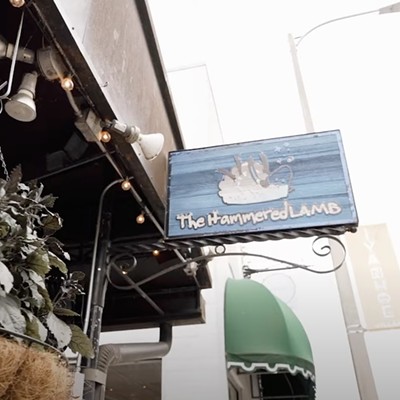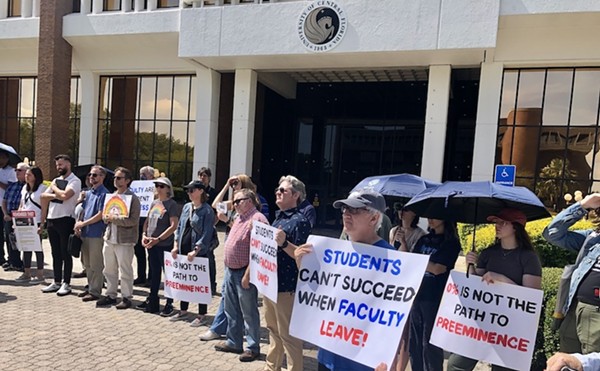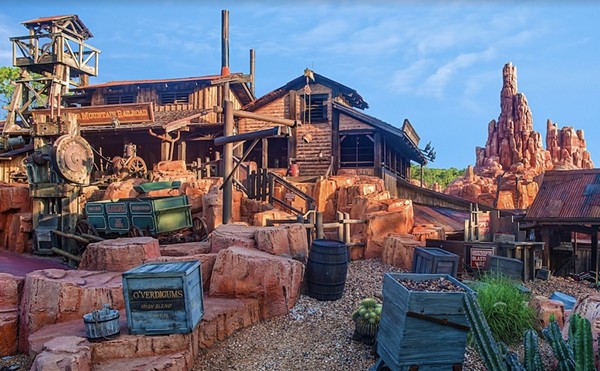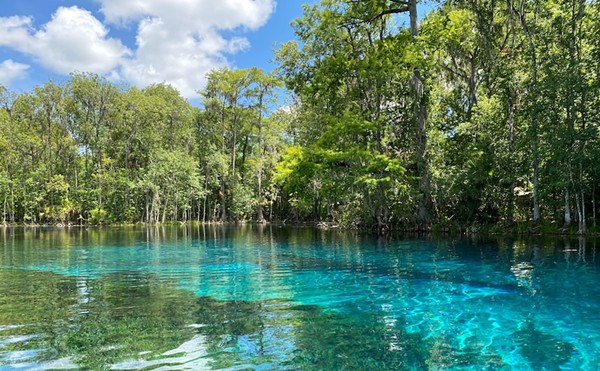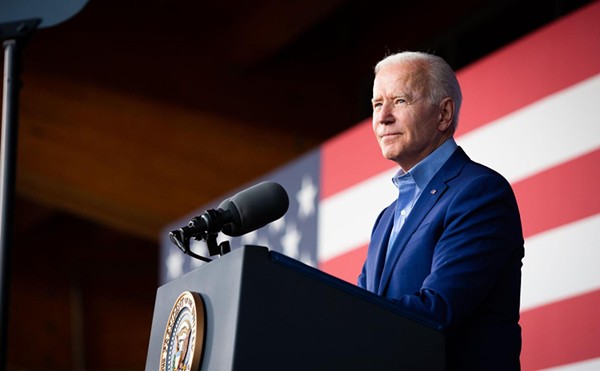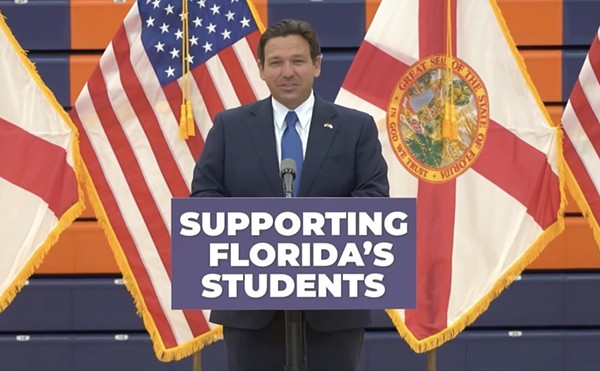After 9/11, patriotism became the new fashion trend. The flag adorned SUVs and went on sale at McDonald's. News anchors wore flag pins on their suits and TV news networks incorporated the stars and stripes into their logos. Later, during the buildup to the war in Iraq, conservatives wrapped themselves in the flag anew, questioning the patriotism of anyone who dared challenge George W. Bush.
And now, with the dust not-quite settled in Iraq, what better time to debut The America Channel, an Orlando-based cable network predicated on the idea that studios in Los Angeles and New York are overlooking the heartland?
Television ignores Middle America, proclaims The America Channel's press release, which was not coincidentally released the Monday after the July 4 weekend to a very receptive media. Stories ran in the New York Post, the Houston Chronicle and the Times as well as on CBS and ABC websites. The America Channel's founder, Doron Gorshein, did an interview with Fox News' Neil Cavuto.
The planned network isn't at all political, says Gorshein, a sure-voiced, steel-jawed, confident 38-year-old former CNN executive.
"I viewed it as the human side of America," Gorshein says. "It's an entertainment channel, not a news channel."
Gorshein hit upon the idea a few weeks after the terrorist attacks on the World Trade Center. He was channel surfing late one night and "couldn't find anything that resonated with my sensibilities," he says.
"My sensibilities that weren't being fed were real stories about real people. There was plenty of entertainment, plenty of so-called reality TV, but nothing that connected me with my community. There was a lot of stuff about celebrities, but I wanted to know more about the struggles and the triumphs of ordinary Americans -- their personal stories, their incredible stories."
If all goes to plan, The America Channel will launch with $65 million and three million potential viewers next spring, bringing a slate of 24 hour-a-day, non-fiction programming. Shows in the works include "Road Trip," in which two 20-somethings get in a Hummer and explore; and "Personal Quest," "a reality series that follows a small group of young Americans, week after week, as they strive to make their own American dreams come true." Or so says the press release.
The network's predictions -- which Gorshein calls "conservative" -- call for 20 million subscribers within three years, and 50 million at "maturity," which Gorshein won't put a time frame on. By comparison, ESPN has about 80 million subscribers. The network's market study indicates that 63 percent of cable viewers want "to know more about the everyday lives of Americans."
The America Channel is currently negotiating with cable and satellite providers, and Gorshein hopes to have his network included in a vast package -- or tier -- of digital channels.
But if it's the heartland Gorshein's aiming for, setting up shop in Orlando -- a town known for its transient population and tourist economy -- seems a bit odd. But beyond the tax advantages to doing business in Florida, and the fact that other cable stalwarts like the Golf Channel and Animal Planet are either based here or produce shows here, Gorshein sees a little slice of Americana in the town that Disney built.
"I think Orlando is a wonderful sample of America," says Gorshein.
After leaving CNN, he worked as an executive for Echostar, the parent company of Dish TV. "It has a number of advantages, including its natural resource, people. More people come here, more Americans come here than to any other part of the country."
At first, most of the production work will be outsourced. As the network becomes more established, Gorshein wants to produce programming locally. He plans to employ about 240 people.
Assuming the station is successful, of course, by no means a certainty. In fact, it's tougher than ever to launch a cable network, and announcing your plans eight months in advance doesn't help your cause.
"It is the kiss of death," says Cathy Rasenberger, president of Rasenberger Media, a consulting firm for cable startups which is currently helping launch the Anime Network. "The press will put the nail in your coffin."
Not the mainstream press, which loved The America Channel concept. Rasenberger is referring to the cable-industry press, which she says will "hunt you down to make sure you're hitting your target launch date and your distribution deals. They will bury you. A lot of networks have been killed by premature press. Everybody's watching."
In other words, if Gorshein falls behind schedule and the trade press makes a stink of it, the investors and distributors Gorshein needs to launch his channel might bail out.
"The media wants to see what the hype is about," says Jim Bates, an Orlandoan who helped establish both the Golf Channel and ESPN. "No matter what the network is, there will always be bugs."
Within two minutes of ESPN's 1979 launch, Bates remembers, the audio malfunctioned. The talent was on-camera, looking bewildered; you could hear the camera crew yelling in the background.
"All of these things take time," Bates says. "You can out yourself under a microscope that can raise everybody's expectation. If it doesn't meet the criteria (of the announcement), you end up taking six steps backward."
Gorshein disagrees with the idea that his announcement was premature, pointing out that he's been laying the foundation of The America Channel for 18 months.
"We were ready," Gorshein says. "We've staffed our team of individual experts. Our immediate advertising group devised plans for the Golf Channel. They planned and developed Sci-Fi, Tech TV. We did this thing methodically. I don't think there's a kiss of death from anywhere. The time was right to go out with it. Within the industry, we had been out already."
The only people who didn't know about the network, Gorshein says, were the consumers he wanted to excite.
Hype notwithstanding, the success of a cable network in an era of 200-plus channel digital and satellite platforms depends, like anything else, on developing an audience. In the cable world, that means finding a sizeable, yet underserved population of cable viewers.
For instance, Bates says, no one will try to create another ESPN; that market has been cornered. Instead, you get 24-hour niche networks that branched off from ESPN's broad-based content -- networks like the Golf Channel, the Tennis Channel and Bates' newest venture, Horse Racing TV.
These networks reach a smaller, yet more focused, group of listeners. And it's an obvious choice for advertisers within the niche the network is serving.
But The America Channel isn't going that route; it's not catering to a specific niche or demographic, Gorshein says: "It's resonating with the American people. The reception has been incredible. The demographic is 18 to 64-year-olds who subscribe to multichannel [programming]. There are no other prequalifiers."
Specifically, Gorshein says The America Channel will target 18- to 34-year-old males and 25- to 49-year-old females, at least at first.
"It functions as a demographic niche in the early years and blossoms into a content niche in the later years," Gorshein says. "We have the potential of reaching everyone in a powerful way."
As for advertisers, he anticipates product tie-ins. For instance, on the Road Trip show, the twenty-somethings could travel in a Hummer (or if Hummer or Hummer's manufacturer, GM, doesn't advertise, a Ford Expedition), sleep at Days Inn, wear Gap and Abercrombie & Fitch and so on.
"You can see how the possibilities are endless," Gorshein says.
Perhaps. But that doesn't change the fact that cable is a tough business to break into.
With a weak economy, cable providers are struggling and investors on Wall Street aren't eager to back any project without a good chance of return.
"A lot of cable networks cannot get launched," says Jeff Pryor, who represents the Anime Network. "Many new networks need funding, at least $50 million ... based on a five-year business plan, $50 million to $150 million. Oxygen [Network] launched at $250 million. The problem is the capital markets are dry. No money, no carriage [on cable and satellite providers]. No carriage, no money. It's a chicken and egg situation."
Another glitch, says Pryor: The big cable companies, when negotiating agreements with startups, impose restrictions on the startups so they can't tell potential investors who they're negotiating with or how close they are to an agreement. The network and cable company can "agree in principle," but the network can't go blabbing about it to investors. Meanwhile, the cable companies are watching to make sure the network is pulling in enough investment capital to launch.
"Ever since 9/11, the world has changed so dramatically," Pryor says.
"Nobody can figure out what the new model [for running a cable network] is."
"It's the hardest time in the history of cable to get a network launched," says Rasenberger. "If it's launched, it's the hardest time to meet the economics [of running the network profitably]."
Despite the uncertainties of the industry, Gorshein anticipates he'll break even in three years.
"It's not a numbers game," he says. "I don't look at the large numbers [of networks] who sputtered and got discouraged. It's all about quality. If there's a quality product out there, it has a high chance of success. We're planning for success."



